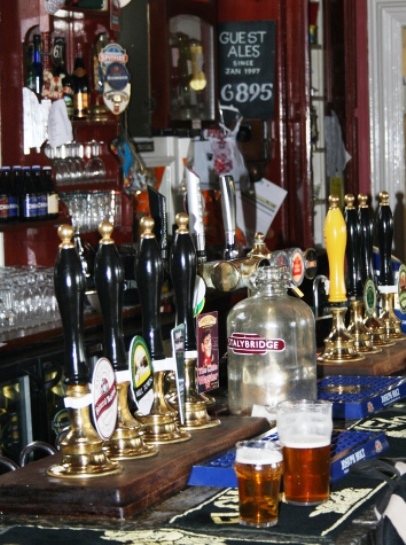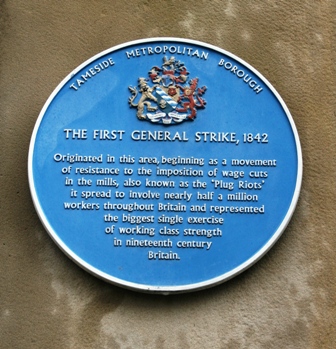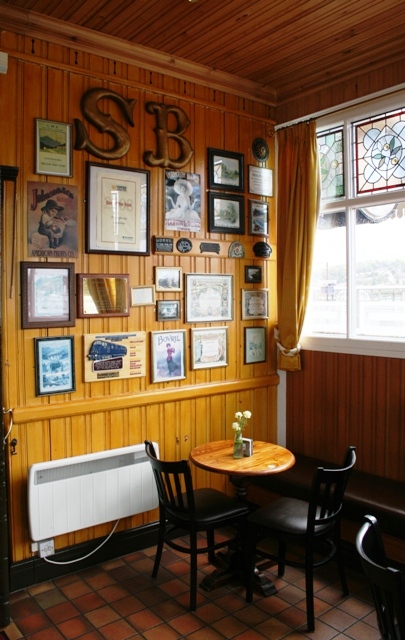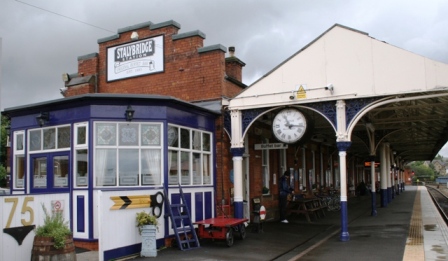A measure of culture
Rail, ale and halcyon days
Invited to join a short tour of the north country by train, Mick Owen found that an afternoon’s distraction contained more cultural reference points than he had expected.
A measure of culture
No encomium of the ‘good old days’ when Britain really was Great would be complete without references to trains that ran on time equipped with helpful things like porters and guards’ vans; football teams that were football teams rather than over-paid prima donnas in it solely for the money; and pints of beer that tasted of something other than chemicals and had no bubbles. If someone were to offer you a day that combined all three and threw in cobblestones, the Pennines, soaring Victorian architecture and a portion of black peas to boot you would have to admit that you would be tempted.
The staff of The Leisure Review are always keen to tread the path less trodden when it comes to cultural experiences so when one of our very first subscribers invited the northern office to join him on “one of the last great train journeys” we were happy to accept. The journey resulted in crossed divides: from Lancashire to Yorkshire; from the 21st century to the Victorian age; from fond hope to inevitable disappointment. And all this in a 40-minute train journey from Stalybridge to Dewsbury.
On first acquaintance Stalybridge is merely an administrative enclave of the invented borough of Tameside, itself no more than a 1970s piece of gerrymandering that helps make up the non-county of Greater Manchester. But then again, it is actually far more than that. It is the site of the first strike (there is a sizeable monument), a hot-bed of religion, radicalism and latterly, though with less merit, wild nights out. Renamed ‘Staly Vegas’ after dark, the streets around the canal are a Wigan Casino for the fighting generation, drawing trouble to their pubs and clubs like the home of northern soul used to attract dancing fools on scooters. But on a wet August Saturday morning the main street begs the paraphrasis of Oscar Wilde’s bon mot: “I went to Stalybridge once. It was closed.”
The joining instructions for the study tour were equally gnomic: “Platform 1, buffet bar, 11am.” The cultural immersion that followed keeping this appointment was akin to stepping into a parallel reality. Picture Trevor Howard had Celia Johnson given him the brush-off and made him miss his train while she was about it. He would need a drink, not a cup of Joyce Carey’s tea, and at the Stalybridge Station Buffet Bar he could have had his pick in surroundings that would have meant he felt at home, the award-winning public house that occupies what was the station buffet; Brief Encounter meets Coronation Street with eight real ales and black peas thrown in.
Curiously at such an early hour our party is not alone. Also making a ginger start to the drinking day are a father and son from Chandlers Ford breaking the journey to watch Southampton FC play their first away game in the third division (they might well claim it is Coca Cola League One but we know, we know). The Saints’ fall from top-flight grace has been depressingly precipitate and with a ten-point penalty to battle this season the chances of even a dead cat bounce look slim. But that does not stop pere et fils riding the rails to previously unconsidered halts and, lest we forget, Huddersfield, today’s opponents, once won consecutive First Division championships, although there is some doubt as to whether the railway had been invented at the time. The football landscape is littered with the bones of once-great clubs as the likes of Gillingham and Wycombe Wanderers, parvenus both, work their way up the tables. Great days lamented is a theme for the day.
By the time we alight at Huddersfield station the red and white stripes of Southampton are bobbing in a sea of blue and white ‘Fartown’ shirts, prompting fils to pull on his M&S pullover just in case. In case of what is unclear as the air of menace which used to accompany all large bodies of football followers is noticeably absent, perhaps because today’s ‘large bodies’ are those of middle-aged van drivers with bellies born of over-exposure to chips, white bread and ale. Which is why we are in this rainy, rather dull town; for a sample of their ale and a spot of unpretentious dining.
As the Head of Steam on Platform 2 is rammed with soccer cognoscenti, we seek both ale and dining in the square directly outside. Huddersfield was the home of Labour prime minister Harold Wilson and ‘working class’ does not do it justice. The people we encounter have no airs and graces. They epitomise the dour northerner of legend; there are flat caps. The fare on offer ranges from sub-Chinese stir-fries to venison-on-a-bap but all of it is offered by down-to-earth souls with thick local accents. It would all be mundane if it were not for the setting. The square is surrounded by the monolithic architecture spawned by Victorian mill owners’ vaunting self-pride. The odd cobble indicates that unrich men, women and children, doubtless in clogs, were the blood in the veins of the body commercial back then but it was the owners that put the face on the industrial revolution and these gross monuments to their money seem over-blown from this side of the millennium.
Despite the built environment, this seems no place for a Daily Telegraph reader and yet, thanks to the modern equivalent of the library reading room – the seats of perennially untidied railway carriages – it is a Torygraph crossword that amuses us on the next hop, on to Dewsbury. The West Riding Licensed Refreshment Rooms opened in the old waiting rooms of Dewsbury station in 1994 and within a year were described by the Campaign for Real Ale (CAMRA) as “legendary”. The building boasts “an Arabic arch in each doorway and window”, food fit for a gastro-pub and the royal imprimatur of a visit from TV’s Oz Clarke and Top Gear’s James May. Thanks to the crossword, the fascinating ebb and flow of ‘interesting characters’ and the array of well-crafted ales, the afternoon slips away pleasantly enough. One could almost see oneself joining in with the 100,000 members that CAMRA have recently celebrated were it not for their unfortunate reputation as the train-spotters of the drinking classes; men in sandals, ill-fitting, unfunny slogan t-shirts and unkempt beards.
In the interest of balance we interviewed a self-proclaimed CAMRA member over a glass of something dark from the Timothy Taylor stable. He said his motivation was to support CAMRA as a campaigning body. He said that the campaign’s work on protecting the nation’s stock of architecturally important pubs, on reducing beer miles by getting pubs to source from local breweries and on making landlords serve full measures were all important whether from a heritage, community or economic perspective. He said that far more CAMRA members were like him – mid thirties, family man, something in recruitment – than were remotely like the stereotype. In fact the idea of a solitary, social misfit seeking CAMRA membership made no sense whatsoever given the sociability at the heart of the CAMRA cause célèbres – the British pub.
And that is a cause worth celebrating. Community is a buzzword of governments local and national, of agencies from the arts to sport, of governing bodies from across the cultural spectrum. Along with churches and their halls and post offices, the pub is held to be at the centre of a healthy community and their loss is quoted as a symptom of the dissolution of society. No British soap worth its name goes without a public house where characters mingle, news is exchanged and gossip promulgated. And so it is when on returning to Huddersfield the tour takes in the King’s Head, an incongruously prosaic name, at the other end of the Huddersfield platform. Two real ale emporia on one railway station when most places have nary a one; that’s greedy. This one gradually fills with football people in stripes both red and blue, and the atmosphere develops rapidly into that found in a poor man’s rugby club: convivial, even lively, but edged with the tang of damp and a décor that cries out for the attention of a local painter and decorator. It transpires that Southampton have gone down by three goals to one and their new midfielder, purchased from Bristol City, looks the part.
As the afternoon cools into evening the final leg of the tour returns us to Stalybridge. A regular – or at least a man standing where a regular would stand at the end of the bar – lets us into a secret: we have just completed one part of the Trans-Pennine Rail Ale Trail. There are other buffet bars on Yorkshire stations. People do this trip all the time; it is a heritage trail. This was no cultural innovation; we were not the first. And worse, if we’d played our cards right we could have got a grant.
The Leisure Review, September 2009
© Copyright of all material on this site is retained by The Leisure Review or the individual contributors where stated. Contact The Leisure Review for details.
Download a pdf version of this article for printing

On the platform with first-class provisions

The first general strike 1842

Waiting room and hope of a delay

Staly Vegas before it gets lively